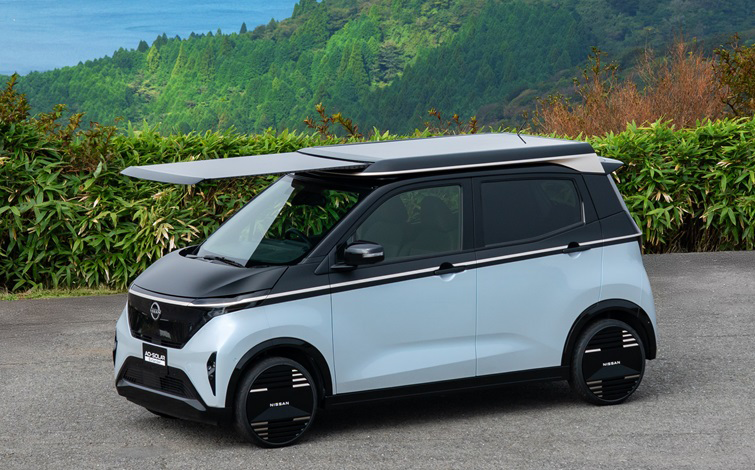The BYD EA1 is one of the most awaited electric cars and just got its approval from the Ministry of Industry and Information Technology (MIIT) to be produced and sold in China.
Expectations for the BYD EA1 are extremely high right now, since this electric car will be made to compete with ICE (Internal Combustion Engine) cars, not only in performance, but also in price and availability.
If I had to choose the three most important electric cars for the coming years, this would be my list:
- BYD EA1
- Volkswagen ID.3 (once it gets cobalt-free batteries)
- Tesla compact hatchback
The Volkswagen ID.3 MIC (Made in China) already got its MIIT approval, but it’ll debut with NCM batteries. Unfortunately, Volkswagen is only expected to bring LFP battery cells with silicon anodes - made by Guoxuan - to its MEB platform in 2023…
MIIT approved #SAIC-VW ID.3 for sales/production in #China, local media citing MIIT doc. pic.twitter.com/d1zuHR8PWG
— Moneyball (@DKurac) June 15, 2021
As for Tesla, the Model 3 already entered the top 20 of world’s best selling cars, I’m sure that a more affordable and practical compact hatchback can reach the top 10. Unfortunately, it’s unlikely to become available before 2023.
This leaves us with the BYD EA1 that will debut the new open-source BYD e-platform 3.0 and arrive later this year.

With regards to efficiency, the e-platform 3.0’s key modules are smaller, lighter, stronger, and lower energy consumption. It is equipped with a new heat pump technology as standard, and a newly upgraded 8-in-1 module for the drive system, allowing the overall efficiency to exceed 89%. An electric vehicle equipped with the e-platform 3.0 takes just 2.9 seconds to go from 0 to 100km/h, with a comprehensive cruising range of up to 1,000km. With 800V fast charging technology, an electric vehicle can be charged for just 5 minutes to give it a range of 150km, while power consumption per 100 kilometers is reduced by 10%, and the cruising range is 10% longer in winter.
In terms of safety, the ultra-safe Blade Battery is the standard configuration of the e-platform 3.0, vastly improve the integrity of pure EVs as one of the industry’s safest power batteries. This is also integrated into the vehicle’s structural design, doubling the torsional stiffness of the body.
When it comes to aesthetics, the e-platform 3.0 models redefine the design aesthetics of vehicles, with shorter front overhangs, wider wheelbase, lower center of gravity, more space, sense of movement and dynamics, as well as a drag coefficient (Cd) as low as 0.21.
The EA1 will be the first model of BYD’s all brand new “e” product series. It’s designed by BYD’s Global Design Director Wolfgang Egger, and is the first model to adopt marine design concepts and a new logo, aiming to create a free, unique, and joyful way of travel for young urbanites.
MIIT approves #BYD #EA1 for sales/production in #China, local media citing MIIT doc. pic.twitter.com/PtdMXpD5Dz
— Moneyball (@DKurac) June 15, 2021
- Length: 4.070/4.125 mm
- Wheelbase: 2.700 mm
- Width: 1.770 mm
- Height: 1.570 mm
- Gross vehicle weight: 1.780 kg (with passengers and cargo)
- Curb weight: 1.405 kg (empty vehicle)
- Motor: 35 kW (constant) and 70 kW (peak)
- Max speed: 150 km/h
- Battery: LFP (LiFePO4) Blade battery by BYD
BYD usually makes its electric cars available with 3 battery/range options. Based on the e-platform 3.0 specs we already know that a range of 1.000 km in NEDC (around 750 km in WLTP) is possible with a high battery capacity option - but probably only available in upcoming bigger electric cars.
However, I suspect that this compact electric car will arrive with more modest battery options, to deliver a range around 400 and 500 km, which is enough considering that it’s expected to charge pretty fast.
Anyway, in China the BYD EA1 is expected to arrive later this year with a price between 100.000 and 140.000 yuan (12.889 and 18.044 euros). As for foreign markets, in Australia the BYD EA1 is expected to arrive early next year with a price below 35.000 AUD (22.218 euros).
The price for the European market isn’t known yet, but the BYD EA1 will be priced to be an alternative not only to the Volkswagen ID.3, but also to its gas counterparts. My guess is it’ll be below 25.000 euros. As always, Norway is the most likely European country to get it first.
More info:

